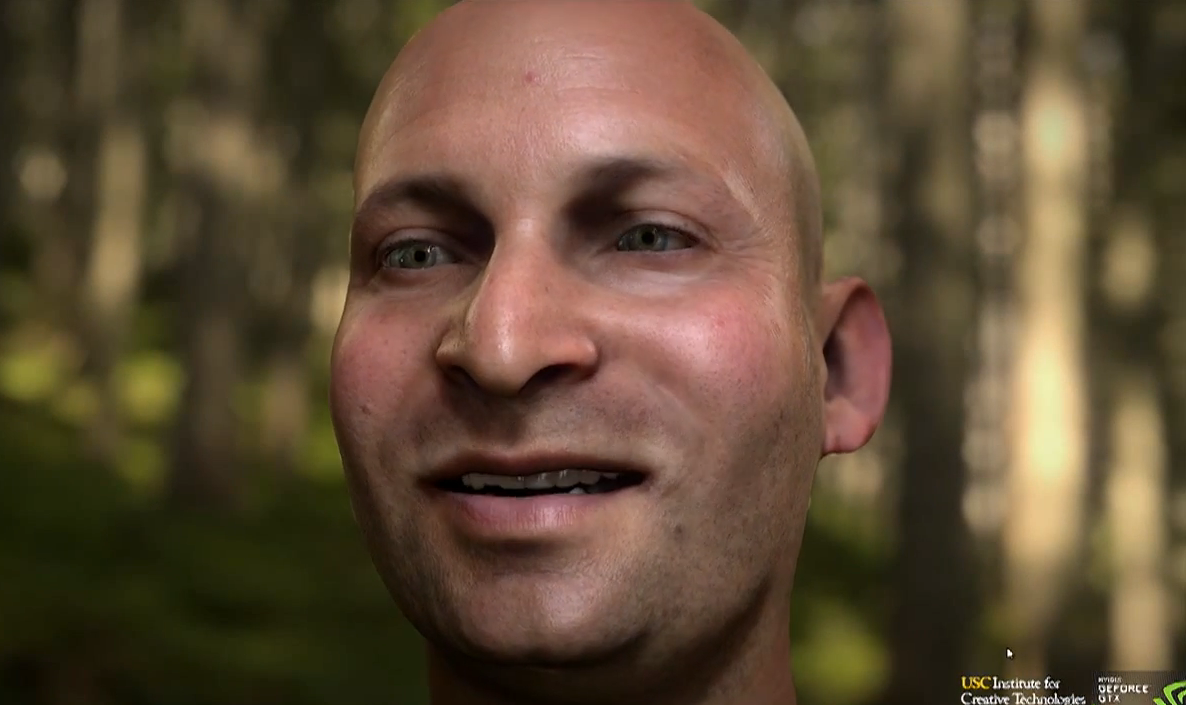Nvidias Face-Render-Demo „Digital Ira“ freigegeben
Auf der diesjährigen GPU Technology Conference (GTC) hatte Gastgeber Nvidia auch über Techniken für möglichst realistische Gesichtsanimationen referiert und dabei die Echtzeit-Techdemo „Digital Ira“ vorgeführt. Diese ist nun für jedermann frei verfügbar.
Auf der Nvidia-Homepage steht „Digital Ira“ im Demo-Bereich als Download (309 Megabyte) zur Verfügung. Als Voraussetzung wird dort mindestens eine GeForce GTX 670 genannt, während das in der dazugehörigen Readme-Datei „empfohlene System“ aus eine GeForce GTX Titan, einem Zwei-Kern-Prozessor mit 2,5 GHz, vier Gigabyte RAM und zwei Gigabyte Massenspeicher besteht. Softwareseitig wird mindestens Windows Vista oder ein aktuelleres Microsoft-Betriebssystem wie Windows 7 oder 8 empfohlen. Da die Demo neben DirectX 11 auch CUDA-Unterstützung und einen aktuellen GeForce-Treiber benötigt, ist ein Betrieb mit einer Radeon-Grafikkarte von AMD nicht möglich – ein Versuch wird lediglich mit einer Fehlermeldung abgebrochen.
ABOUT THE REALTIME DEMO
1. This demo is brought to life by a collection of methodologies we collectively call "FaceWorks".
2. Mesh deformation is accomplished with skinning and by blending between facial targets given to us from ICT.
3. Diffuse color, specular color, diffuse bump, specular bump, and displacement all 4096x4096 textures of 30 facial targets.
4. Originally the texture data was several gigs, but is reduced to 300 megs by use of texture compression and through tile-based texture optimizations whereby redundant tiles are discarded.
5. Character is dynamically tessellated with smoothing and displacement driven by HDR displacement maps.
6. Skin includes HDR subsurface scattering and transmission. Is computed in texture space to eliminate issues at silhoutte and with a backface optimization to eliminate unnecessay work. Transmission most visible in lighting environment 3, where light can be seen through the ear lobe but blocked by the veins in the ear.
7. Eyes include subsurface scattering and a raytraced iris / pupil shader
8. Full scene HDR depth-of-field with bokeh and dynamic tone-mapping
9. The average pixel on the screen is the result of about 8000 instructions
a. This equates to approximately 40,000 FLOPs per pixel
b. At full HD resolution that is 82 billion FLOPs per frame
c. At 60 fps that is 4.9 trillion FLOPs per second
d. Those are shader instructions and do not include the 161 filtered texture fetches / pixel
Auszug aus der Readme-Datei zur Nvidia Techdemo „Digital Ira“

